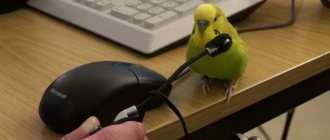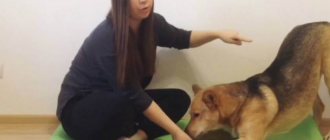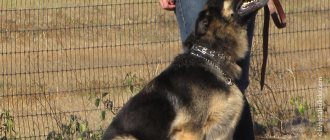Playing dead is a great dog trick. While it's not as important as teaching a dog to obey commands like "sit" and "stay," training most dogs to play dead is not difficult. This can be a fun game for both the dog and its spectators.
All you need is a handful of his favorite treats and you're ready to start training your dog to play dead. This is a great trick for clicker training. If you decide to take a clicker training course, make sure you have your clicker handy.
Add signal
Once your dog has been able to perform the action a few times, add a control word and a hand signal. Most people prefer to use the verbal command "Bang" along with a hand gesture command, holding their fingers to look like a gun pointed at the dog. Others prefer to simply use "die".
Of course, you can choose any word and any hand signal. Some people like to say a funny phrase like, "Would you rather be a cat or would you rather die?" It's funny to see the dog pretend to be dead after that.
Provide your chosen keyword and hand gesture, then repeat the steps. Practice this trick several times a day for a few minutes each time, and soon your dog will fall on his side in response to your signal.
Options for the “Die” command
- To achieve the most effective performance, train your dog to perform the “Die” command as quickly as possible.
- Command the dog to “Die” while he is walking in the “Nearby” position. At the same time, continue to move.
- Tell your dog to jump on the bed or sofa and perform the “die” command there.
- Teach your dog to “die” when you are some distance away from him. To do this, say “Stand”, “Wait”, take 2-3 steps back and command “Die”, pointing the “pistol” with your fingers at her. Start with a small distance, but gradually increase it to several meters.
Problems
If your dog already knows how to roll over, his natural tendency may be to roll over completely when you begin to lure him towards you. This is a great time to get your clicker to capture exactly the behavior you want.
Lure the dog to the side with a treat, immediately click the clicker and give the dog the treat. If she tries to keep rolling over, move away for a minute.
When your dog realizes that the treat disappears when he rolls over completely, he will likely stop doing so and only offer the behavior that provides the treat.
If you can't get your dog to follow a treat so that he ends up lying on his side, you can show him what you want him to do instead.
Use the treat as bait, and at the same time you can very gently nudge him to the side. Once your dog is in the correct position, click the clicker (or tell him “yes” or “okay”) and give him the treat.
If your dog wakes up from dead play faster than you want him to, you can train him to lie there longer. Instead of giving your dog a treat the minute he lays down, wait a few seconds and then give the treat.
Repeat this a few times and then add a few seconds. This way, you can gradually add more time until your dog kicks and plays dead for a few minutes or more.
If at any point in your dog's training he makes more than two or three mistakes in a row, you've probably moved on too quickly. Go back a step or two and practice, and only when the dog has succeeded in this step, start moving forward slowly again.
Remember to be patient and consistent. All dogs learn at a different pace. Maintain optimism during training sessions and end them if your dog is upset, tired or bored.
Always try to end the session on a positive note, even if that means switching to easier activities such as sitting or lying down last.
We teach the dog to freeze in the “Die” position for a while
If you want your pet to remain still for several seconds, gradually increase the time between the voice command and giving the treat.
So, to train your dog to lie in the “Die” position for 10 seconds, do the following: take 10 pieces of treat, squat down, command “Die” and reward your dog every second. While the dog is lying down, say “Wait, wait.” After feeding the last piece, say “Done!” and let her change position.
Feeding the dog while he is lying down
Then start giving the treat not every second, but after 2 seconds, then after 4 seconds and then increasing. This way the dog will get used to lying quietly and waiting for the final command “Ready”.
Dog tricks:
Kiss
Voice and quiet
Back
Give me your paw
Wave your paw
Rotation
Ask
Roll
Die
Bow
Common mistakes
The biggest mistake is being forced to perform this trick. It leads to suppression of the dog’s desire to cooperate with the owner and to a negative attitude towards the learning process.
Very often, the owner allows the dog to jump up, without restraint and even without a permission command. This leads to the fact that the animal, having heard the command “die!”, does not even try to lie down, but joyfully demands a treat.
There is no need to be upset if the pet does not want to “die” on command. Most likely, after a few weeks, the dog will be happy to learn a new trick. Animals are also not in the mood, they are affected by magnetic storms and moon phases, so you should not insist on immediate implementation. It is much more important not to lose the dog’s trust.
Development of a reflex
There are several methods for teaching a dog the “die” command. It is easiest to train an animal that already knows how to perform the “down” command. You just need to add another conditional signal. After the dog lies down, carefully turn it onto its side, remembering to say the key phrase. You can turn your pet on its back, and to strengthen the reflex, instead of giving out treats, scratch its tummy.
Also, before turning your pet over, you can snap your fingers loudly. The dog will associate the click with performing a rollover. And performing the coup, in turn, will lead to the desired reward.
If the dog does not know the “down” command, and the owner’s plans only include learning the “die” command, then the training process can be slightly simplified.
- Order the animal to sit.
- Hold the treat in your hand and smoothly move it from your pet’s nose to the floor. The animal will not lie down right away, but will definitely bend over for a treat. If you place a treat 10-15 centimeters from your pet, you can expect the animal to take a reclining position.
- At the moment when the pet almost reaches the treasured treat, you need to loudly say “die” and turn the animal on its back.
It is best to carry out training according to this scheme on a soft surface, so as not to accidentally throw the dog onto a hard floor. If the animal understands that this is a game, it will not be afraid of sudden movements of the owner. Therefore, it is important to use only positive intonations, stroke your pet often, and show your satisfaction with what is happening in every possible way.
What you need to know before starting training
The first lessons to practice the skill should be conducted at home. When the dog has mastered the skill a little, you can move on to outdoor exercises. To do this, you need to choose a secluded place where there will be a minimum of external stimuli so that the pet is not distracted: for example, a clearing in the park.
Prepare in advance treats that you will reward the student for his success. Regular food will not be suitable for these purposes: it simply will not be regarded as a reward. Make some cheese chunks, tasty dog crackers, or flavored vitamins. Pet stores sell special treats for training.
Do not use salty crackers, refined sugar, or smoked meats. For dogs, this is, of course, a delicacy, but everyone knows the harm to pets’ health from such products - a sore stomach and teeth.
Training is recommended before feeding. It will be more difficult to motivate a well-fed pet and generally force it to act actively.
Before starting classes, you need to think through a system of signals. Each individual command must have its own specific signal. For example, to execute the command “Lie down!” an inverted palm swing is used. You cannot use the same or a similar signal to execute the command “Die!” – the dog will simply get confused.
Some breeders recommend first giving the order “Down!”, and then giving the signal to roll over. But it’s much more impressive when the pet immediately falls on its side or back. This will require a special signal, for example, clenching your palm into a fist and sharply unclenching your fingers. For fun, some owners point their index finger at the dog, as if it were the barrel of a gun.
It is important that the dog associates a specific signal with a specific action and does not get confused. Otherwise, a comical situation may arise when you give the command “Lie down!” at an exhibition, and the dog falls on its back and remains motionless.
Do not use punishment in training. The animal will not form the necessary connection. If, upon receiving a command, the dog does not perform the action and hears a shout from the owner or, even worse, receives physical punishment, he can react to this command accordingly: for example, he will begin to hide in fear.
When to start learning the “Die” command
This can be done at any age. The main thing is that the animal already knows commands such as “Lie down” and “Sit” well - in this case, learning the command will take much less time. If you decide to teach your dog to fall from a standing position or even while running, knowledge of basic commands does not matter.
It is easier to start learning the “Die” command when the dog already knows how to sit and lie down at the owner’s request.
As for age preferences: on the one hand, young dogs are more willing to learn new commands, but on the other hand, older and more experienced dogs (provided that they have been training the animal from an early age) quickly understand what is wanted from them. Be that as it may, with a great desire, some perseverance and certain skills, teach how to execute the command “Die!” Any dog is possible.
Training this command can be combined with other exercises:
- The movement of the dog on the command “Nearby”.
- Giving voice.
- A convenient command in everyday life: “Give me a paw.”
What is "Die" useful for?
The funny command is not included in the mandatory dog training course. The command is taught primarily with those pets who are nervous in an unfamiliar environment. A fun trick helps them relax and take their mind off things.
“Die” is included in the training of dogs for special services at the request of their handlers. Some of them find the command quite useful. To amuse guests, “Die” is also suitable. And man’s four-legged and furry friends themselves love to die and be resurrected on command. The dogs probably understand that this is pampering. But it trains their mental abilities.
Useful tips
To quickly and easily consolidate a skill, use a game form of training, take into account the four-legged mood, stick to consistency and avoid too long sessions. The following tips will help you with this:
- Maintain interest in the process by purchasing new toys.
- Stop training if you notice fatigue or discomfort.
- Increasingly increase the complexity of the exercises, not forgetting to repeat already established skills.
- Limit your study time to one hour.
At the same time, it is recommended to learn another skill – “Quiet”. It makes it much easier to control unwanted barking.
In what situations is the command useful?
When the word “die” is said, the dog must lie on its side (or roll over on its back) and remain motionless until the owner’s next instructions. In fact, the command is similar to the order “lie down”, but when performed by some animals it looks very funny. You can use “die” not only for shooting funny videos, but also in everyday life.
Firstly, the owner gains greater control over the behavior of his pet. Secondly, you can take your dog with you literally everywhere. Indeed, in any situation, the owner will be sure that the animal will quickly calm down and will not require increased attention. This skill will also come in handy when visiting the veterinarian or groomer. The dog will quickly understand that it needs to not only lie down, but also turn on its side and freeze. This behavior will greatly facilitate the work of the service personnel.
A standard team training goes like this:
Then, with a treat clenched in the fist, they encourage her to lie on her side.
You can also apply pressure to your dog's side to help him lie down correctly. Then you will need to say the command. The command should be followed by praise.
It is much easier to teach an adult dog a trick than a beagle, doberman, dachshund or any other breed puppy. When learning a trick, you should take into account the physiology of your pet. A bulldog, husky, spitz, labrador, yorkie, poodle, or chihuahua puppy is much more active than a sharpei, corgi, pug, spaniel or pekingese puppy.
You can effectively teach a dog the “Die” trick only in a calm environment. The method of executing a command can be copied from an adult dog who has this skill and is able to show how to do it correctly.
Puppy training should be carried out in a place where there are no cats, kittens, or other dogs. Training at the trick level is carried out in a playful way. Correcting the animal's behavior should not take more than 10-20 minutes. Otherwise, the dog will get tired and completely refuse to learn new knowledge. Some pets are able to learn a trick in a couple of lessons, while others will take almost a month to consolidate the skill. The mental abilities of animals also vary greatly, just like the abilities of people.
Source
Complicated fetching
A more complex version of training trains endurance and obedience. The animal learns not only to fetch things, but also to carry them next to the owner.
Edible item
After mastering basic fetch, the toy can be replaced with a cracker, a piece of cheese or another edible product.
It is very important to motivate your pet here. For every success, he should receive not only praise, but also a more tasty morsel.
Carry an object nearby
This skill is trained after memorizing the command “Nearby”. Ultimately, the dog must hold the toy in its teeth and walk with its owner in the same direction. A successful demonstration of skills will reward you with a generous treat.
What to pay attention to
They begin training from about a month old, but they approach the issue with particular seriousness once the pet reaches three months of age.
The lesson itself does not take place separately, as happens with other teams, but as if in between, or rather at the time of the commission of a crime. By the way, the key word is “at the moment,” that is, shouting “ugh” and punishing before or after an offense is pointless - the animal still won’t understand why it was offended so much.
In fact, the goal of all education comes down to the formation of a stable inhibitory conditioned reflex to an order against the background of some kind of punishment (unconditioned stimulus). In this case, this irritant will be pain, discomfort from the same tug on the leash, etc.
It is strictly forbidden to punish for up to three months - this will only frighten the animal and make it nervous, completely disobedient, and in some places inadequate.
Physical techniques are possible only from three months:
- a slight but noticeable clap on the croup or back with the palm of your hand;
- sharp tugging on the leash, but not so much that the animal suffocates;
- blow with a whip or rod;
- using a special collar with spikes, etc.
It is not recommended to use improvised accessories such as slippers as punishment. Perceiving a slipper as an offender, the animal will begin to take revenge in the most unsightly way: chew it or wet it. When working with puppies, a taboo also applies to parfors - a strict collar with spikes.
Scolding with your hands is quite appropriate, because they not only punish, but also feed and caress, and therefore are not perceived as an enemy object.
The principle of operation is quite simple: as soon as the puppy breaks the rules, he should immediately hear “Fu” in a threatening intonation with a hint of reproach. At the same time, the pet is spanked on the butt or the leash is tugged at itself.
The type of punishment is determined by the circumstances:
- if it is on the street and the animal is trying to grab something or attack someone, then it is advisable to pull the strap,
- if a person is nearby and the baby is gnawing on something, then a slap is used.
If there is no reaction, then the animal is simply silently pulled away from the harm and waits for the next time, when an even more threatening tone and more tangible physical punishment can be applied.
Small tricks when learning
Some especially cunning dogs try to do things their own way, not wanting to do what the owner wants, or simply not understanding him.
Make sure that your dog does not choke on the treat, as he will eat it while lying down.
It is important to prevent the animal from acting incorrectly by promptly stopping attempts to “bypass” the command:
- To prevent the dog from getting up in search of a treat, it should be held by the back, preventing it from rising.
- If your dog crawls for a treat instead of falling, you can knock him down yourself. Or, as an option, give another command (for example, “Crawl”) so that the animal’s initiative does not remain unclaimed.
- The treat should be something that the dog cannot choke on , because it must be given when not only the body, but also the head of the animal is lying down. This could be a piece of wet food, hard cheese, etc.
- When completing the exercise, be sure to give a command to stop the action. For example, it could be “Live!”, “Wake up!”, “Rise!” or any other.
With regular training, the dog quickly understands what is required of it.
Interesting! Most animals willingly carry out the “Die” command, receiving for this a well-deserved portion of the owner’s praise and the delight of familiar children.
How to teach to die?
There are several ways to train your dog to do the “Die” trick. The reinforcing method is based on reinforcing the pet’s desired behavior with praise. For example, a dog lies calmly on its side. The owner can come up to her, command “Die”, and then treat her with a tasty treat. To this command you can add a certain gesture that the owner of the animal can come up with on his own.
After the above actions, you can clap your hands loudly and shout “Come to life.” The dog will jump up, for this you also need to praise it and treat it with goodies.











